Neutralidad específica. Un manifiesto sobre la nueva vivienda colectiva
May 27, 2008
Artículo realizado por Atelier Kempe Thill
Este artículo describe algunos de los cambios que afectan a la vivienda colectiva, con la intención de aportar una nueva visión sobre el tema. El artículo se basa en un estudio demográfico llevado a cabo en el año 2001 en nuestra oficina. Además, la mayor parte de las ideas y conclusiones tienen que ver con 10 concursos sobre la vivienda, realizados entre 1998 y 2002, y con nuestra experiencia en la construcción de varios proyectos de viviendas en Holanda. El texto está ilustrado con cuatro proyectos en los que hemos estado trabajando últimamente.
Problema. La vivienda colectiva masiva
La vivienda de grandes bloques está en crisis. Después de un comienzo esperanzador, que tuvo lugar al final de los años cuarenta con proyectos como los apartamentos Lakeshore Drive de Mies van der Rohe y la Unidad de Habitación de Le Corbusier, la vivienda colectiva se convirtió, en los años sesenta, en un modelo exclusivamente utilitario, cuyo fin era conseguir viviendas baratas para el mayor número de gente posible. Después de ese periodo, la vivienda colectiva sufrió el estigma de ser identificada con la “vivienda para los pobres”, que todavía permanece y que inconscientemente define la imagen que tenemos de ella. La razón es compleja, pero creemos que los arquitectos pueden cambiar esta situación o, al menos, ofrecer nuevas propuestas. Creemos que existe un verdadero trabajo por hacer.
En el futuro, se producirá un cambio sobre el paradigma de la vivienda colectiva. Se abandonará el estereotipo de vivienda social de bajo coste, con soluciones estandarizadas y tenderá hacia una arquitectura más pensada para el usuario, más flexible y más personalizada. La vivienda colectiva se puede convertir también en una alternativa a las urbanizaciones que aparecen en las afueras de las ciudades. Este cambio puede tener enormes consecuencias para la planificación urbana y puede aportar un nuevo significado al concepto de densidad.
La revolución demográfica. El habitante de la nueva ciudad
En los próximos veinte años se producirá un notable incremento de la demanda de viviendas. Según las actuales tendencias demográficas, existirán dos factores que cambiarán la población occidental. Uno de ellos será la tercera edad y el otro, los emigrantes de países extranjeros. Estos cambios demográficos harán saltar por los aires la estructura de la sociedad. La clase media desaparece y con ella la clásica familia nuclear del siglo veinte. La sociedad se troceará en unos nuevos y amplios subgrupos: personas que viven solas, dinkies (parejas con dos ingresos y sin hijos), familias monoparentales, y gente mayor, todos ellos con referencias étnicas y culturales diversas. Cada uno de ellos tendrá sus propias expectativas sobre cómo le gustaría que fuera su vivienda, pero sorprendentemente casi todos ellos preferirán un apartamento situado en un entorno urbano. Las ventajas de una infraestructura pública, unos servicios, una oferta cultural variada y un entorno con facilidades para los discapacitados serán las razones que les empujen a escoger el estilo de vida urbano, frente a las urbanizaciones con jardín de las afueras.
Por otro lado, la sociedad en el norte de Europa y en Estados Unidos se está volviendo mucho más dinámica. La gente cambia de trabajo a menudo y con ello también cambia su entorno habitable. El periodo de tiempo para vivir en una casa ha bajado hasta situarse entre 3 y 5 años. La gente ya no mantiene unos lazos fuertes con el barrio en el que vive. La casa se convierte en un objeto sometido a especulación económica, que es parte de la carrera profesional de cada uno. En holandés existe una palabra woonkarriere, que define, paso a paso, la carrera ascensional del entorno construido de cada persona.
1. Neutralidad. Casas por metro cuadrado
La concha
En general no sabemos para quien construimos las casas. Ya no existe un modo de vida común o un modelo social claro. Las casas deben ser flexibles para llegar a ser atractivas para diferentes grupos sociales y de esta manera aumentar su valor en el mercado. La venta de casas por metro cuadrado es el sueño final de todo promotor inmobiliario.
Los edificios en el futuro deberán ser flexibles de dos maneras: Por un lado, flexibles durante el proceso de diseño. Los rápidos cambios que se producen en la actual economía globalizada y el relativamente largo plazo que necesita un proyecto de vivienda colectiva para finalizarse –en Holanda, alrededor de cinco años–, hace que durante ese proceso se tenga que hacer frente a una nueva situación a la que el diseño tiene que ser capaz de dar una respuesta. Por otro lado, flexible a lo largo de la vida del edificio. La posibilidad de cambiar las divisiones interiores, los aseos y baños, e incluso pasar de viviendas a oficinas, se convertirán en un tema importante en el diseño de la vivienda colectiva. Esa es la razón por la cual un buen piso es un gran espacio neutro que puede ser ampliado. Un gran espacio neutro puede cubrir perfectamente todos los anhelos espaciales. La zona de estar y el acceso deberían estar separadas de cualquier otra. La zona de acceso del tipo pasillo o galería, podría ofrecer la flexibilidad requerida.
Casa = oficina
Este cambio hacia una mayor flexibilidad y neutralidad hace más necesarios los nuevos métodos de construcción. Los muros de carga de los cerramientos exteriores ofrecen una total libertad en el interior. Los sistemas de vigas y soportes en acero, hormigón o madera ofrecen lexibilidad en dos direcciones y son más interesantes, desde este punto de vista, que los sistemas que se apoyan en las divisiones interiores –como el sistema holandés de encofrado túnel–. Para crear más flexibilidad, el conjunto del forjado adquiere mucha importancia. El suelo registrable permite la integración de todos los conductos y puede ofrecer una gran flexibilidad en la situación y modificación de aseos y baños. Esta manera de hacer edificios de arquitectura colectiva como si fueran oficinas se está convirtiendo en el nuevo Leitbild, en la nueva imagen conductora. La consecuencia es que las tipologías de viviendas y oficinas cada vez son más parecidas. Las casas pueden ser oficinas. Esto también tiene que ver con el hecho de que el trabajo, en el futuro, se realizará desde casa con el consiguiente efecto positivo sobre el medio ambiente.
Hospitalización
El aumento de la población anciana tiene unas enormes implicaciones para la sociedad. En el futuro, el cincuenta por ciento de los propietarios de casas será mayor de 55 años.
Actualmente, en Holanda existe un fuerte grupo de presión con gran influencia en los procesos de planificación, que ha creado un conjunto de nuevas normativas edificatorias relacionadas con el problema de la población de más edad. Unos pocos ejemplos. El cartero tendría que poder llegar en silla de ruedas; cada pasillo debería tener 1,20 metros de ancho; al lado de cada rampa para disminuidos debería haber una escalera –porque hay gente que no puede andar sobre una rampa–.
La hospitalización es un nuevo fenómeno. De hecho, todo el mundo puede convertirse en un disminuido y la sociedad occidental en su conjunto podría decidir vivir junta en un hospital. Todos los proyectos de vivienda colectiva en el futuro deberán llevar la “Etiqueta de calidad de los ancianos” como si fuera el mínimo común múltiplo: ascensor, una única planta y sin escalón en el umbral. Esto es lo que hace que se olviden los conceptos sobre la vivienda de Le Corbusier.
Ahora ya no valen ni los dobles espacios, ni las casas con varias plantas, ni el promenade architectural. Mies es el futuro. La consecuencia lógica es diseñar una estructura sólida con una fachada buena y flexible y un amplio espacio vacío que sea independiente del exterior.
2. El piso. Paisajes privados
Tamaño
La familia nuclear ha desaparecido y con ella la organización tradicional del piso. Dos factores influyen en los nuevos hogares. Por un lado, las viviendas son cada vez más grandes debido al gran aumento del bienestar en las últimas décadas. En Holanda, la relación de superficie por persona está ahora en 50 metros cuadrados, pero ha disminuido el número de personas por piso. El índice en Holanda está en 2,2 personas por vivienda e irá disminuyendo. En la organización de un piso esto supone dos cosas. Primero, que se necesitan menos espacios privados, menos dormitorios y segundo, que la sala de estar puede hacerse más grande a costa del espacio para dormir y además, porque no hacen falta unidades de baño añadidas, ya que las personas que viven en la casa son menos.
Minimalismo
La historia de la arquitectura en los últimos cien años ha sido una historia de reducción y de ahorro. A partir de 1900, el ornamento dejó de estar al alcance de la gente. En los años veinte, todos los detalles basados en la artesanía tradicional se redujeron por razones económicas. En los ochenta, la gente que habitaba en viviendas sociales ya no podía pagar ni los papeles pintados, ni las alfombras.
En este momento, la vivienda, al menos en Holanda, ha alcanzado el punto en el que no hay casi nada que pueda considerarse como innecesario. El interior se ha reducido y estandarizado hasta el punto en el cual simplemente no hay trabajo para el arquitecto. En las buenas publicaciones de arquitectura holandesa de viviendas no existen fotos de interior, porque todos son iguales. Todos los pisos tienen la misma escalera económica, los mismos muros, puertas…, no importa si se trata de vivienda social o de lujo.
Los promotores piensan que la labor del arquitecto es distribuir la planta de acuerdo con la normativa de la edificación y diseñar la fachada. Están en lo correcto, porque es el proceso más lógico dentro de la economía globalizada. En el mundo occidental, el trabajo manual es caro y por lo tanto, se debe reducir al mínimo. El siguiente paso es que el interior como tal desaparecerá completamente. El piso se convierte, de esta forma, en una única habitación vacía, con una toma de cables y un contador. Los habitantes se transforman en auto-constructores y son quienes crean su propio entorno habitable de acuerdo con su gusto y con su presupuesto. El concepto Ikea se extiende por todo el interior.
Loft
por un montón de publicaciones –lofts de Berlín, Amsterdam, Londres y Nueva York–, pero ¿en qué consiste? Pensamos que el loft es más un espacio exterior cerrado, que una habitación clásica. Es un paisaje interior platónico, un trozo de vacío dentro del la ciudad. Su éxito es, por un lado, el signo de una forma de vida más personal e individualista y por otro, es la reacción contra el declive de las comunidades urbanas y del espacio público. En el loft, uno puede crear su propio paraíso y restringir todas las relaciones con la esfera pública al mínimo, debido a que con los nuevos medios de comunicación la gente puede estar bien conectada y encontrar y recibir casi todo lo que desea. El loft es una mezcla de público y privado. Puede ser un hogar o una oficina o ambas cosas a la vez.La nueva tipología del siglo XXI es el loft. Sesenta años después de la conmoción que supuso la casa Farnsworth, se ha convertido en la tipología más deseada. Esta tendencia está apoyada. Antes, la gente quería salir a la calle, ahora prefiere quedarse en casa.
Hacia el tipo de vivienda del norte de Europa
Actualmente, especialmente en los países del norte de Europa, existe una normativa muy exigente en lo que se refiere al aislamiento frente al clima, al ahorro de energía y al ruido. En el futuro, debido a la existencia de unos recursos limitados y al incremento de la conciencia sobre el bienestar, esto será una tendencia generalizada. Esta visión añade dos problemas a los proyectos de viviendas: Aislamiento. Debido al deseo de reducir pérdidas de calor en los edificios, se intenta que estos sean cada vez más compactos y que la profundidad de los pisos sea mayor. Ruido. En los edificios situados en las ciudades, los problemas de ruido exigen unas protecciones contra la contaminación acústica cada vez mayores. Esto se puede conseguir con fachadas de doble capa o con cierres más opacos a la calle con ventilación mecánica.
La consecuencia es que la casa se convierte en una caja cerrada térmica y acústicamente, que sólo se abre para el contacto visual. Técnicamente esto significa complicar la construcción, porque las fachadas de las casas se componen de varias capas. Los interiores, cada vez más, se ventilan artificialmente, lo que les hace estar más cerca de los edificios de oficinas. El síndrome del edificio enfermo, tradicionalmente destinado a los edificios administrativos, puede aparecer por primera vez en los proyectos de viviendas.
Pensamos que el fenómeno descrito no sólo causa problemas, sino que contiene en sí mismo un potencial enorme. Da la posibilidad de construir casas que estén formadas por varias capas. Con ello, la casa se divide en un forro aislante y un forro impermeable (jersey y chubasquero). Se puede crear un colchón térmico, que sirva a lo largo de las distintas estaciones del año y que añada una dimensión espacial a la casa.
Del m2 al m3
Los proyectos tradicionales de los promotores en Holanda describen las cualidades de una casa en términos de metros cuadrados y según el número de dormitorios que tenga. Cada vez más, el comprador experimentado, ocupado en su carrera por una vivienda mejor, tiene más conocimiento y distingue mejor entre metro cuadrado y metro cúbico. El metro cúbico sirve mejor para describir las posibilidades y el potencial de una casa, más que las cualidades que ofrece. Dentro de una envolvente dada, la gente puede crear su propio paraíso. Este fenómeno puede ser también una posibilidad, en los proyectos de vivienda colectiva, para crear más individualidad y libertad. Desde el momento en que se separa la estructura y el relleno, se puede ofrecer una enorme cantidad de tipologías sobre la misma estructura básica. La gente puede construir su casa dentro de una casa.
3. Gueto positivo = nueva colectividad
Comunidades valladas
En la sociedad de masas globalizada la gente busca desesperadamente tener una identidad. El principal factor humano de identificación es el propio hogar y el lugar en el que se vive. Parece que el tema de crear un entorno específico se ha convertido en la principal tarea del trabajo de los arquitectos. Este fenómeno se llama “efecto Bilbao”. En la vivienda colectiva esto produce una interesante paradoja contemporánea. Por un lado, este tipo de edificios deberían ser lo más neutros y flexibles como fuera posible, ya que están diseñados para una masa de personas anónimas. Por otro, existe la expectativa por parte del público y de los futuros usuarios de encontrar algo único y personal, con lo cual se puedan identificar. Después de treinta años de lucha por la individualidad –desde 1968–, al fin ocurre algo interesante. La colectividad vuelve a ser aceptada de nuevo bajo la premisa de libertad y posibilidad de elección. El hecho de compartir se convierte en algo agradable si se realiza dentro de un entorno controlado.
El florecimiento de comunidades cerradas en Estados
Unidos, gated communities, puede interpretarse como una herramienta positiva para las ciudades europeas, que supone la creación de agradables edificios colectivos. Las nuevas cualidades, lo específico, puede surgir de los programas extra y de los espacios que se añaden a los edificios de pisos.
El hotel para vivir
Las visiones sobre la vivienda de los constructivistas rusos parece más cercana. La envejecida población occidental es rica y necesita ayuda. En las viviendas colectivas esto significa que la integración de los servicios es importante. Servicio quiere decir que pueden existir personas que ayuden eventualmente, como un portero o, un servicio de limpieza o, un gremio, pero también programa extra, como un bar, una piscina, un gimnasio o una consulta de médico. El potencial de la vivienda colectiva permite, bajo la premisa de la colectividad, actividades que no están al alcance de una única persona. El hotel puede ser un modelo perfecto para un proyecto de vivienda colectiva de gran tamaño.
Aparcamiento integrado
Los aparcamientos de superficie son los espacios colectivos más devaluados. Los aparcamientos subterráneos convencionales son muy caros, porque necesitan ventilarse artificialmente y a menudo son desagradables, peligrosos e inflexibles. Las soluciones de aparcamiento integrado, como los aparcamientos en cubierta o sobre la galería de acceso a las viviendas, pueden ayudar a ahorrar costes, al evitar las instalaciones de climatización y pueden crear espacios agradables, que den a la gente la oportunidad para relacionarse.
Oasis verde
El barrio como concepto ha muerto. La gente no puede establecer relaciones duraderas con su entorno, porque tiene un estilo de vida alocado e intenso. Las cualidades que sean consumibles directamente son las más importantes. Para contrarrestar una vida dinámica y estresante lo que se necesita es una contrapartida más estática y calmada. Pensamos que un jardín cerrado (hortus conclusus) es una idea interesante para la vivienda colectiva. Este jardín se convierte en un lugar para relajarse y además permite que la gente se relacione en su bloque, como una alternativa al barrio. Este oasis puede tener también funciones biotécnicas, como depuradora de aguas o regulador energético.
A causa de los índices de delincuencia y del peligro que supone el tráfico rodado, especialmente en las áreas urbanas, es casi imposible para los niños jugar en la calle. Este oasis puede entenderse, además, como una zona protegida.
Conclusión
Un plan voisin suavizado
Los bloques de viviendas basados en los principios de neutralidad –la concha–, el loft, la comunidad cerrada, el hotel para vivir, y el oasis verde pueden transformar la ciudad. Existe pues una alternativa al urban sprawl que puede ofrecer más a sus residentes que los normales proyectos de viviendas colectivas. Con sus cualidades inherentes puede aportar una vida nueva a los centros de las ciudades y ofrecer posibilidades que sólo se encuentran en la periferia. De acuerdo con su escala limitada y con su concepto clásico basado en “dentro” y “fuera”, pueden reaccionar contra el contexto y enriquecerlo. Con ello, las ciudades actuales sufrirán una transformación suave y pausada.
El nuevo arquitecto
Si los arquitectos quieren tener influencia en el futuro, se deberán concentrar en las raíces de su profesión. Una vez observado el fenómeno, existe todavía una enorme tarea que hacer para conseguir unos sistemas de construcción flexibles, unos nuevos conceptos sobre climatización y unos métodos de construcción que sean los adecuados al momento actual. Los arquitectos tienen que empezar a ser otra vez ingenieros, que ofrecen una herramienta, en lugar de ejercicios formales rígidos. La clave para el futuro es crear estructuras neutras y flexibles, que aguanten y que permitan continuos cambios. El nuevo fenómeno del mercado de la vivienda colectiva puede ayudar al arquitecto a salir de su posición académica, que consiste en ser sólo un diseñador y obligarle a ganar el territorio que había perdido.
Atelier Kempe Thill
André Kempe nació in Freiberg, RDA –antigua Alemania del Este– en 1968. Desde 1990 a 1996 estudió en la Universidad Técnica de Dresde, donde obtuvo su título de arquitecto. De 1993 a1994 estudió planeamiento urbano en París y en Tokio en 1994.
De 1996 a1997 trabajó con Frits van Dongen, de Architecten Cie, Amsterdam. De 1997 a 2000 trabajó con Karelse van der Meer architecten, Rotterdam. En 2000 abrió el Atelier Kempe Thill en Rotterdam. Desde 1999 es lector invitado en la Universidad Técnica de Delft y en la Academia de Arquitectura de Arnhem.
Oliver Thill nació in Karl Marx Stadt, RDA –antigua Alemania del Este– en 1971. Desde 1990 a 1996 estudió en Universidad Técnica de Dresde donde obtuvo su título de arquitecto. De 1993 a1994 estudió planeamiento urbano en París y en Tokio en 1994.
De 1996 a 1997 trabajó con Frits van Dongen, de Architecten Cie, Amsterdam. De 1997 a 2000 trabajó con DKV architecten, Rotterdam. En 2000 abrió el Atelier Kempe Thill en Rotterdam. Desde 1999 es lector invitado en la Universidad Técnica de Delft y en la Academia de Arquitectura de Arnhem.



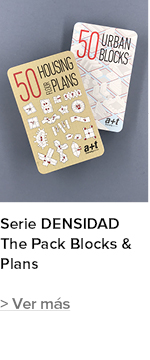

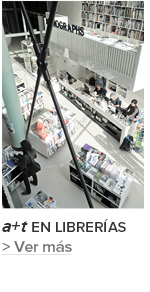
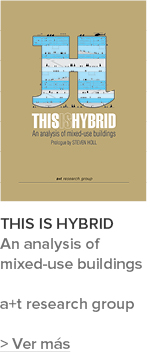
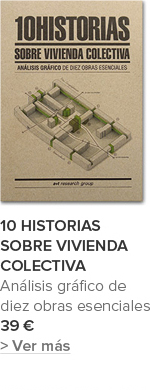
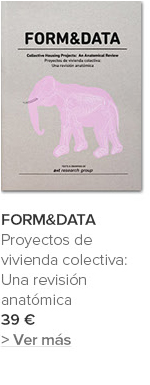
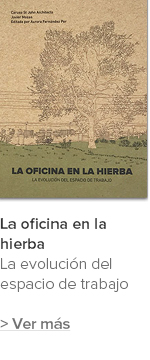
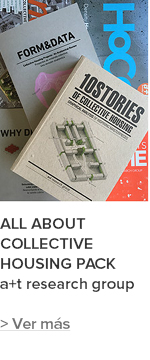


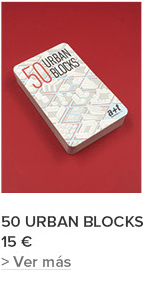

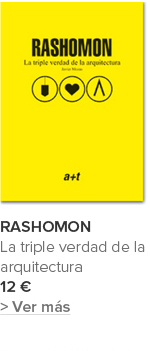
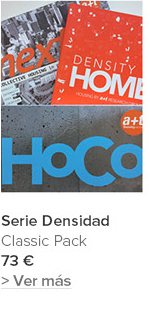





 He leído y acepto las
He leído y acepto las 


